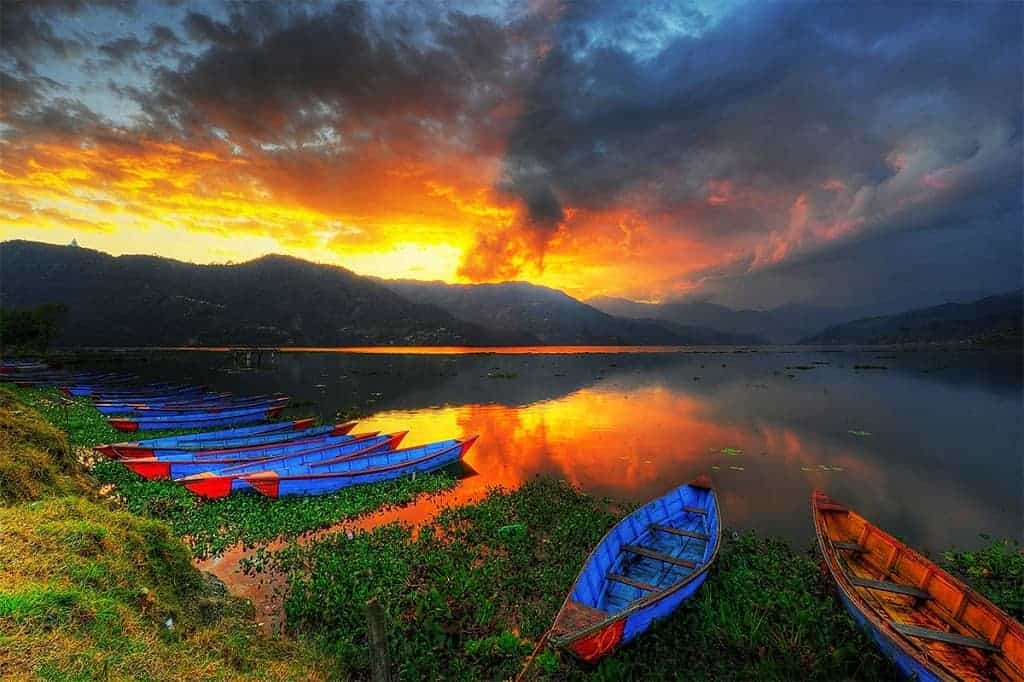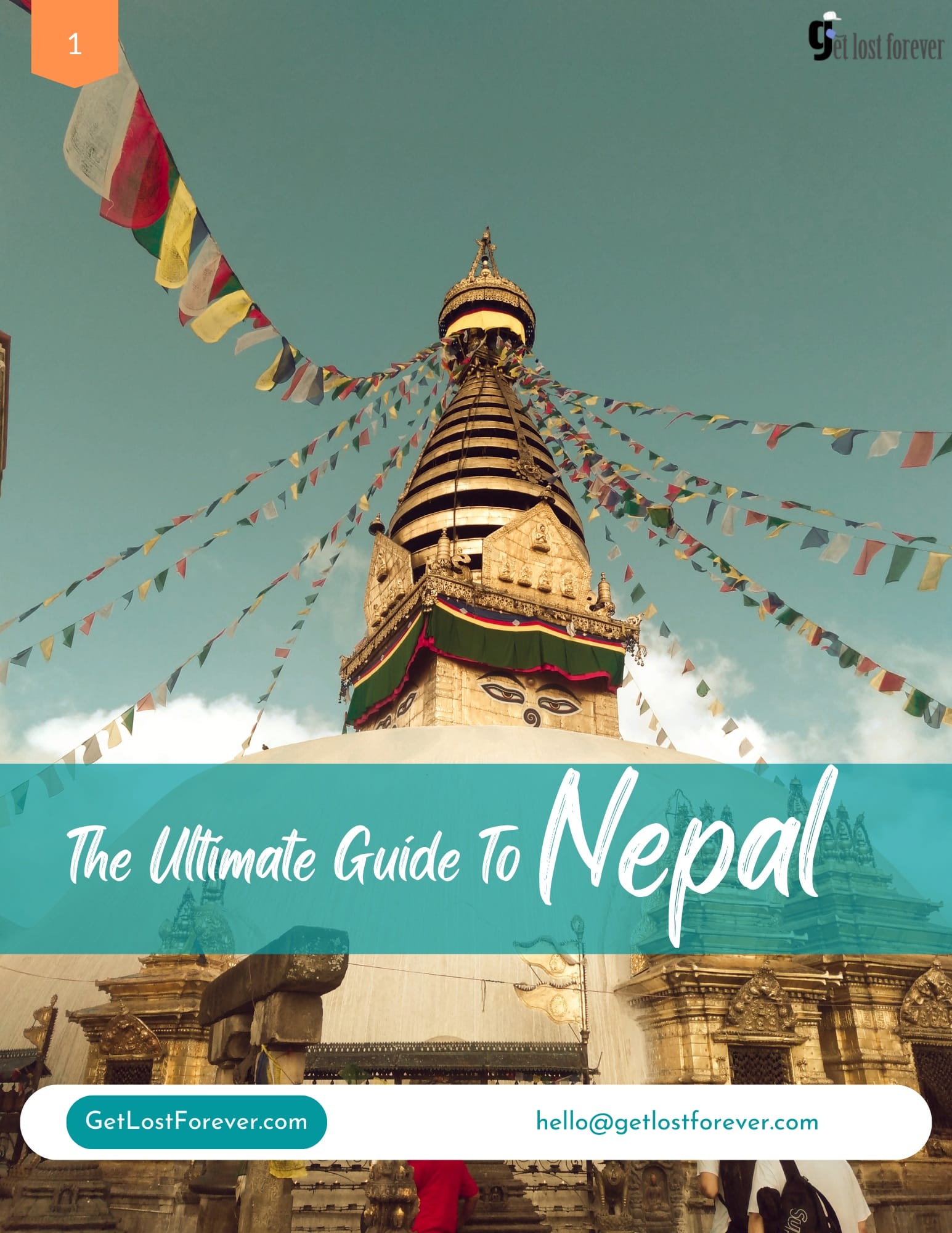
March-May
Sept to Nov
Nepalese
Hindi
English
NPR (Nepalese Rupees)
Nepal is a beautiful country. The country is home to ten of the highest mountains in the world putting it right at the top list for trekking enthusiasts.
However, the country is home to some of the rarest species, friendly people, picturesque views, culture and World Heritage sites.

Helpful guidance to make your trip smooth and stressfree.
Nepal is full of amazing adventures. You can hike, visit old temples, or watch wild animals in the jungle. Many people love visiting Kathmandu to see colorful streets and historic buildings. Pokhara is great for lake views and mountain sunsets.
The best time to visit Nepal is in autumn from September to November and in spring from March to May. The weather is clear, and you can see the mountains very well. These months are great for trekking, festivals, and outdoor fun.
There are many wonderful places to see in Nepal. Kathmandu for culture, markets, and sacred sites. Pokhara has lakes and views of tall mountains. Chitwan National Park for wildlife who want to see rhinos and tigers.
Most visitors can get a visa at arrival in Nepal. Just fill out a form, show your passport, and pay a fee. Make sure your passport is valid for at least six months. Some travelers can also apply online before their trip.
More Details In Ebook >>
There are many ways to travel in Nepal. In big cities, you can take taxis, buses, or rent private cars. For long trips, you can fly between major cities like Kathmandu and Pokhara. In the mountains, you will walk or use local jeeps on rough roads.
Nepal is a great choice for budget travelers. Its has lot of cheap hotels and food almost everywhere. It helps to know what you want to do so you can plan your spending ahead of time. You can download the book to know the prices.
Things You Must Know As A Tourist Visiting Nepal
Staple Foods
Dal bhat is the main daily meal in Nepal. It comes with rice, lentils, and vegetables. Momo (dumplings) are also very popular and easy to find.
People
People in Nepal are warm and welcoming. Saying “Namaste” with a smile is a polite way to greet others.
Safety and Crime
Nepal is mostly safe for travelers (including solo female travelers). Keep your phone, bag, and wallet close in busy places like markets or buses.
Respect for Culture
Nepal has many temples and holy places. Dress modestly, take off your shoes when asked, and always ask before taking photos.
LGBT Travelers
Same-sex couples can travel freely and feel safe in most areas. Public romance of any kind is not common here, so keep things low-key to respect local culture. Hotels in tourist places are used to international visitors and are welcoming.
Cash and Payments
The money used in Nepal is Nepalese Rupee (NPR). ATMs work in cities but may not in small towns, so bring cash when going remote.
Internet and SIM Cards
Getting local SIM cards such as Ncell or Nepal Telecom is a straightforward and hassle-free process. Internet is usually good in cities but slower in the mountains.
Drinking Water
Tap water is not safe to drink. Use bottled or filtered water. Many hotels and cafes have refill stations.
Tipping
Tips are appreciated but not forced. Tour guides, porters, and restaurants usually welcome a small tip to show thanks.
Toilets and Hygiene
Public toilets are not common. Carry your own toilet paper and hand sanitizer, especially when traveling outside cities.
Adventure Conditions
Weather and roads can change quickly, especially in mountains. Listen to your guide and stay flexible.
Emergency Help
The emergency number is 100 for police and 102 for ambulance. Guides and hotel staff can also help if needed.
Frequently Asked Questions
Yes, getting a visa on arrival in Nepal is very easy and quick. During busy travel months, you may have to wait in a line for a little while. If you want to avoid waiting, you can get your visa from a Nepal Embassy or Consulate in your home country before your trip. Both choices are fine.
If you already got your visa from a Nepal Embassy, you must enter Nepal within six months from the date the visa was issued. Your stay in Nepal will start counting from the day you arrive in the country.
Gratis Visa
If you did not get a visa before your flight, you can get one when you arrive at Tribhuvan International Airport in Kathmandu. Just follow these simple steps.
1. Fill out the Arrival Card when you land. You also need to complete the Tourist Visa form online. You can do this before your trip on the official Nepal Immigration website or at the airport using the special machines. (If you fill out the form online, you will get a receipt with a barcode.)
2. Print it and bring it with you. The barcode is valid for fifteen days. If it expires, you will need to fill out the form again.
3. Go to the payment counter at the airport. Multiple payment methods is acceptable but the department advises to carry cash to be on the safer side. Pay the visa fee based on how long you want to stay.
4. Take your receipt, passport, and form to the Immigration desk. The officer will check your documents, ask a few simple questions, and then place the visa sticker in your passport. After this, you are ready to collect your bags and start your adventure in Nepal.
Visa Extension Fee
Nepalese Rupee (NPR) is the currency. Credit/debit cards are accepted in cities and tourist areas, but cash is advisable in remote regions.